Bathhouse Flatiron features atmospheric interiors by Rockwell Group
In NYC, Bathhouse Flatiron evokes the 'futuristic remnants of an ancient civilisation'

Bathhouse Flatiron, by New York studio Rockwell Group, was transformed from a Manhattan parking garage into a sophisticated destination for relaxation and socialising. The second Bathhouse outpost to open in NYC invites patrons into a communal space where they can move between hot and cold pools, just like the Greeks and Romans did two millennia ago. But unlike the bathhouses of antiquity, the interiors here are intriguingly dark and futuristic, more akin to a stylish nightclub than classical thermae.
Inside Bathhouse Flatiron, New York

The new Flatiron location for Bathhouse follows the success of the company’s inaugural outpost in Williamsburg, housed within a former soda factory that’s full of exposed brickwork, subway tile, and other industrial details. Not long after opening in 2021, co-founders Travis Talmadge and Jason Goodman hired Rockwell Group to conceptualise a second location, across the East River on West 22nd Street, which began welcoming visitors earlier in January 2024.

Although missing the same rich architectural bones, the empty concrete shell offered a blank slate that allowed for large open spaces and provided freedom to implement a newly developed visual language for the location. 'Our design concept for Bathhouse’s first Manhattan location was the idea of the hero’s journey, the common template in our stories from mythology that involves a hero who embarks on an epic journey or quest, encounters challenges with a decisive apex, and returns home transformed by the adventure and personal growth,' said Rockwell Group principal and studio leader Michael Fischer.
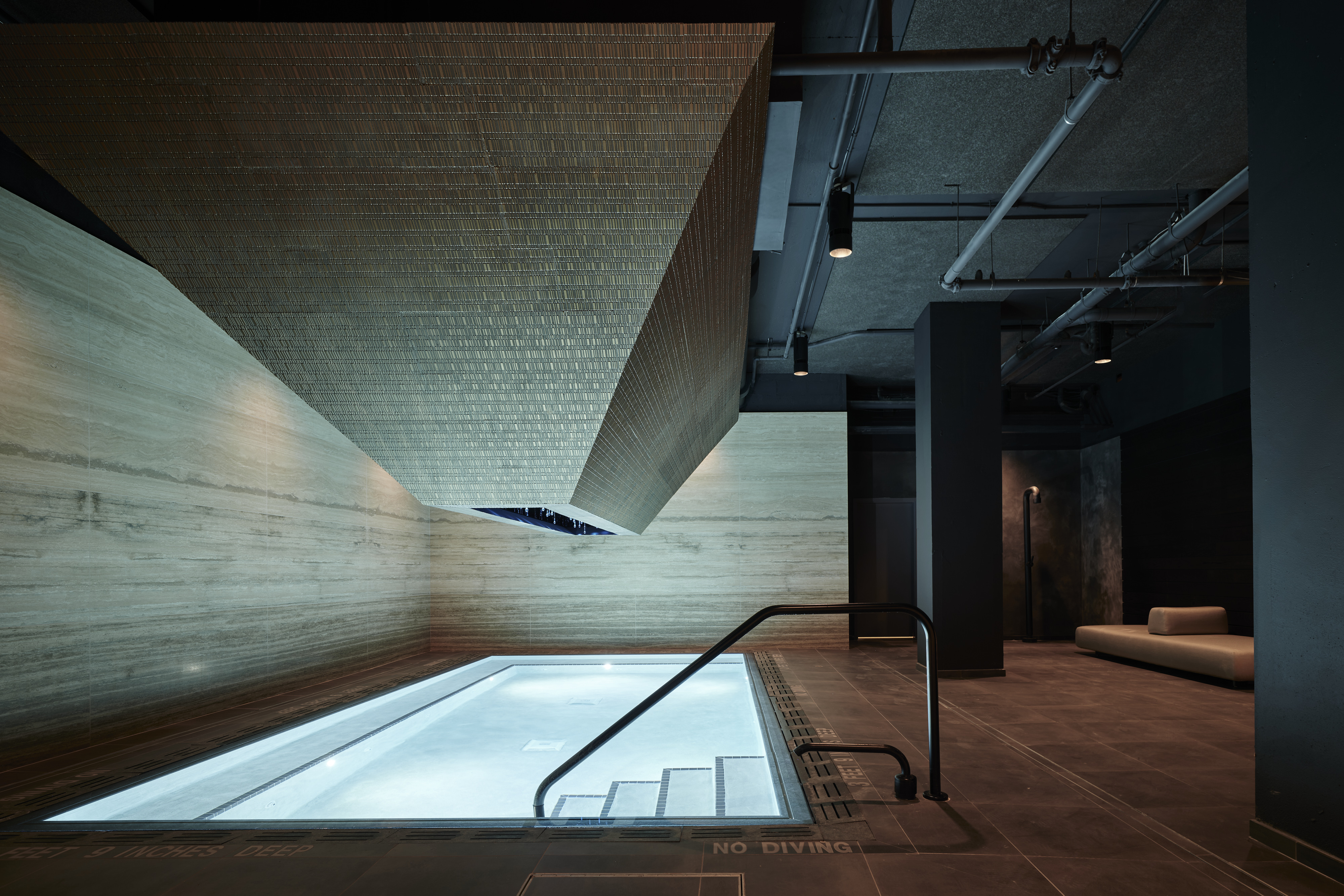
Upon arrival, visitors are greeted at a street-level reception and retail space, with a central stone counter that funnels incoming and outgoing foot traffic on either side. Once registered, the guests embark on their 'journey' as they descend down a series of dramatically illuminated staircases and through multiple portals, which each indicate entry to a different functional area. 'The view is always obscured as you move along the route, so you never quite see the destination,' said Fischer, whose team intentionally configured the labyrinthine locker rooms and quarter-turn stairs to add to the sense of mystery.
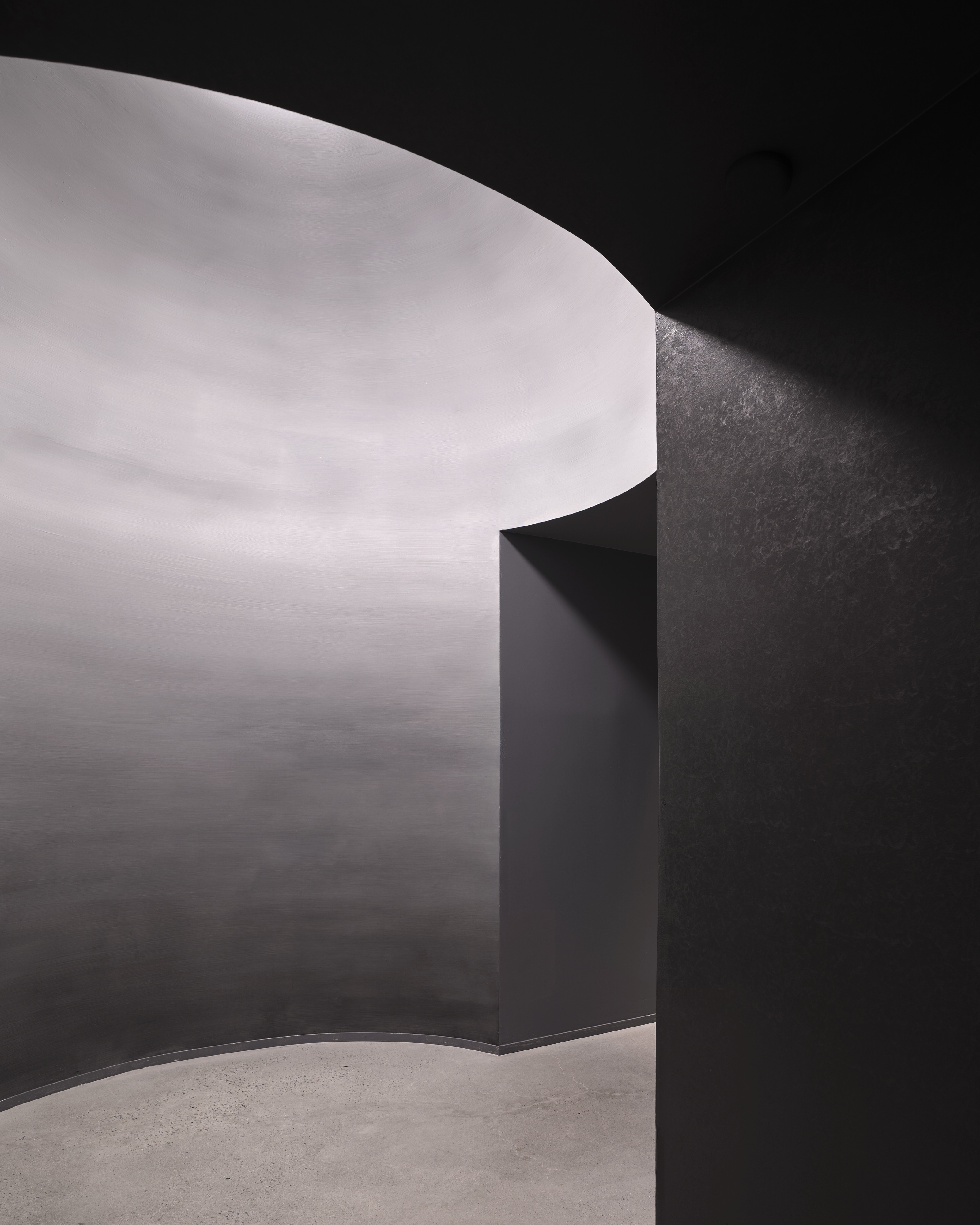
A moody material palette also elevates the ambiance. Travertine, fluted glass, stone, concrete, tile, and patinated metals are used together to create 'a new architectural language, allowing guests to feel as though they’ve discovered futuristic remnants from an ancient civilization,' Fischer said. For example, a series of inverted pyramid structures covered in patterned markings are suspended over some of the bathing pools, revealing lighting installations inside when viewed from underneath.
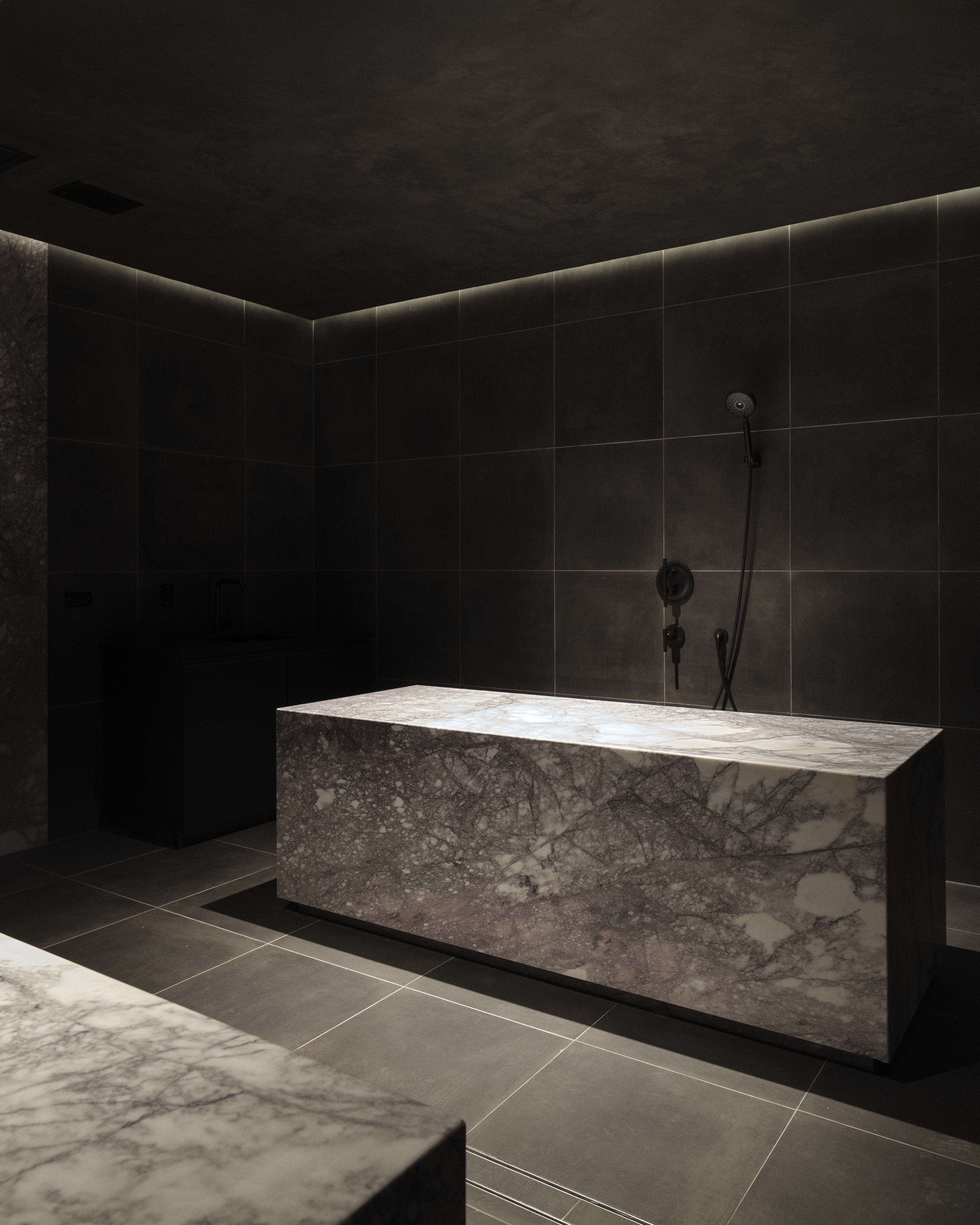
Along with the hot, cold and temperate pools, amenities include a hot-coal dry sauna, a banya, an infrared sauna, and a steam room—all kept at different temperatures. A separate area for those who’ve booked treatments like massages and scrubs has an additional salt-water pool, and there’s also a restaurant serving beverages and snacks. Bathhouse day passes are available, offering an ideal winter activity in NYC.
Bathhouse Flatiron
14 W 22nd St
New York, NY 10010
Receive our daily digest of inspiration, escapism and design stories from around the world direct to your inbox.
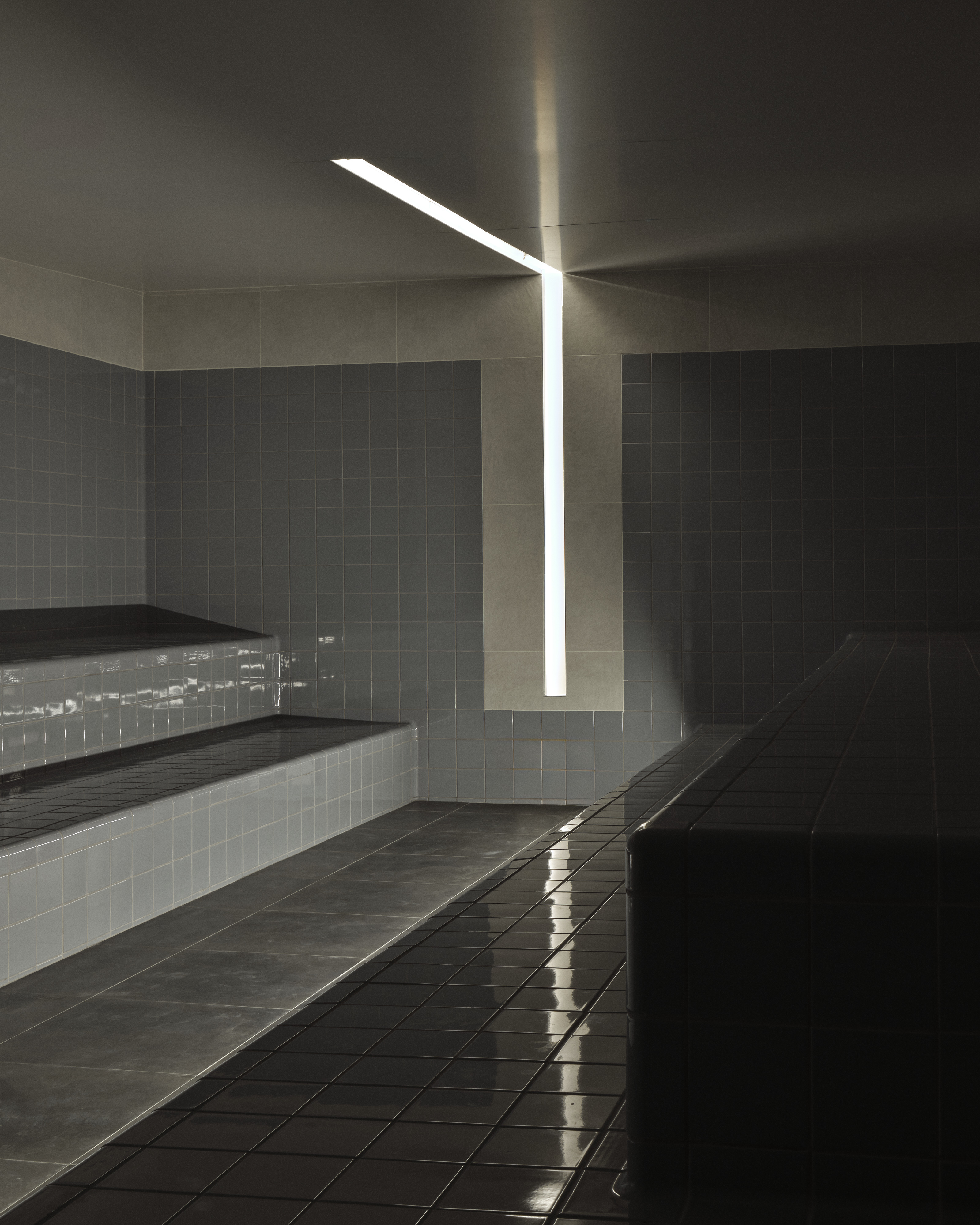


Dan Howarth is a British design and lifestyle writer, editor, and consultant based in New York City. He works as an editorial, branding, and communications advisor for creative companies, with past and current clients including Kelly Wearstler, Condé Nast, and BMW Group, and he regularly writes for titles including Architectural Digest, Interior Design, Sight Unseen, and Dezeen, where he previously oversaw the online magazine’s U.S. operations. Dan has contributed to design books The House of Glam (Gestalten, 2019), Carpenters Workshop Gallery (Rizzoli, 2018), and Magdalena Keck: Pied-À-Terre (Glitterati, 2017). His writing has also featured in publications such as Departures, Farfetch, FastCompany, The Independent, and Cultured, and he curated a digital exhibition for Google Cultural Institute in 2017.
-
 Year in review: the shape of mobility to come in our list of the top 10 concept cars of 2025
Year in review: the shape of mobility to come in our list of the top 10 concept cars of 2025Concept cars remain hugely popular ways to stoke interest in innovation and future forms. Here are our ten best conceptual visions from 2025
-
 These Guadalajara architects mix modernism with traditional local materials and craft
These Guadalajara architects mix modernism with traditional local materials and craftGuadalajara architects Laura Barba and Luis Aurelio of Barbapiña Arquitectos design drawing on the past to imagine the future
-
 Robert Therrien's largest-ever museum show in Los Angeles is enduringly appealing
Robert Therrien's largest-ever museum show in Los Angeles is enduringly appealing'This is a Story' at The Broad unites 120 of Robert Therrien's sculptures, paintings and works on paper
-
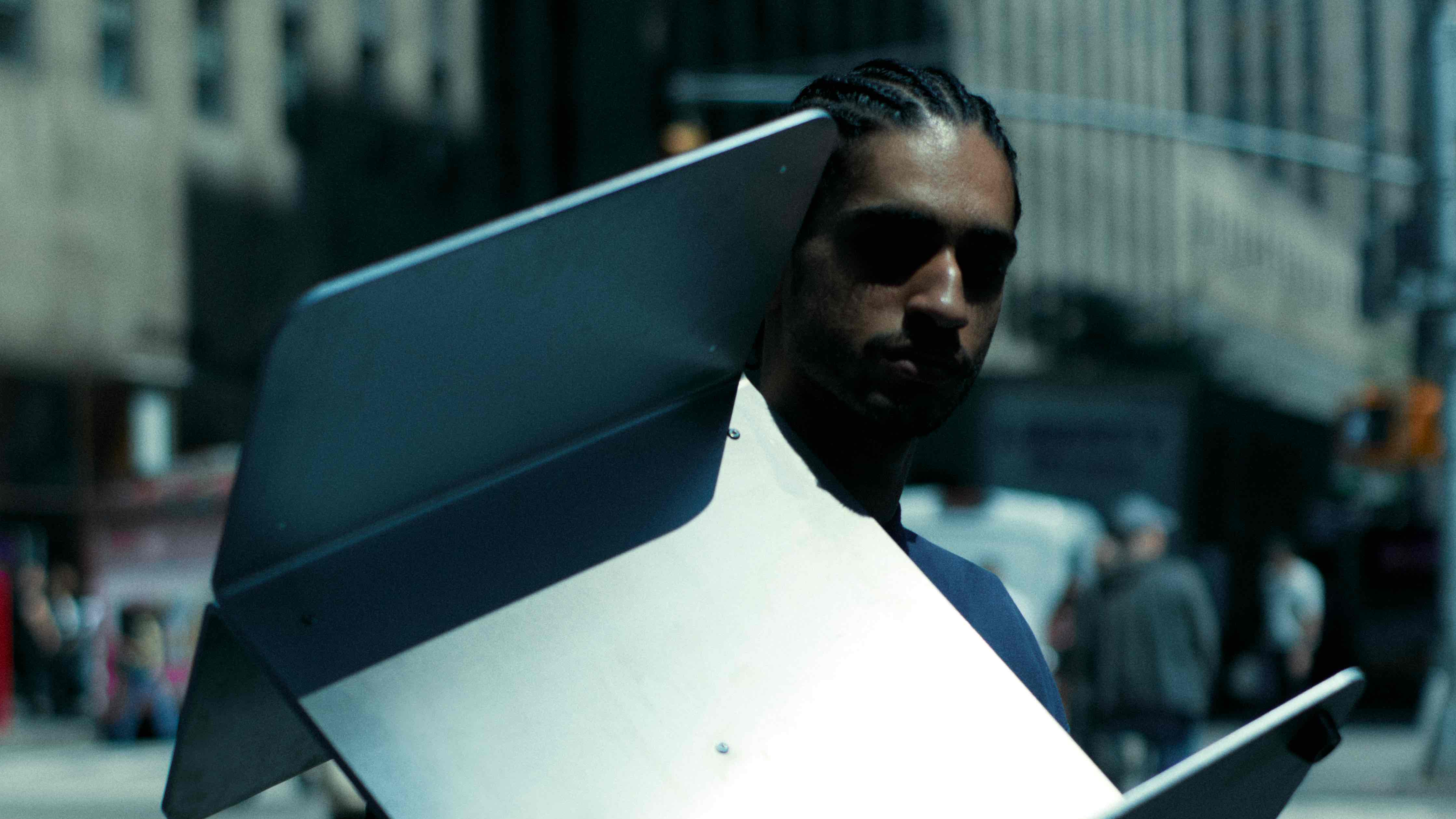 Meet Goodesign, the modular furniture studio with big dreams
Meet Goodesign, the modular furniture studio with big dreamsWallpaper* speaks to Emmanuel Popoteur, the self-taught designer behind New York’s Goodesign, a studio creating intuitive, adaptable furniture for modern living
-
 Five things we loved at ICFF this year
Five things we loved at ICFF this yearFrom ceramic sconces to inflatables, here's the furniture and lighting that caught our eye
-
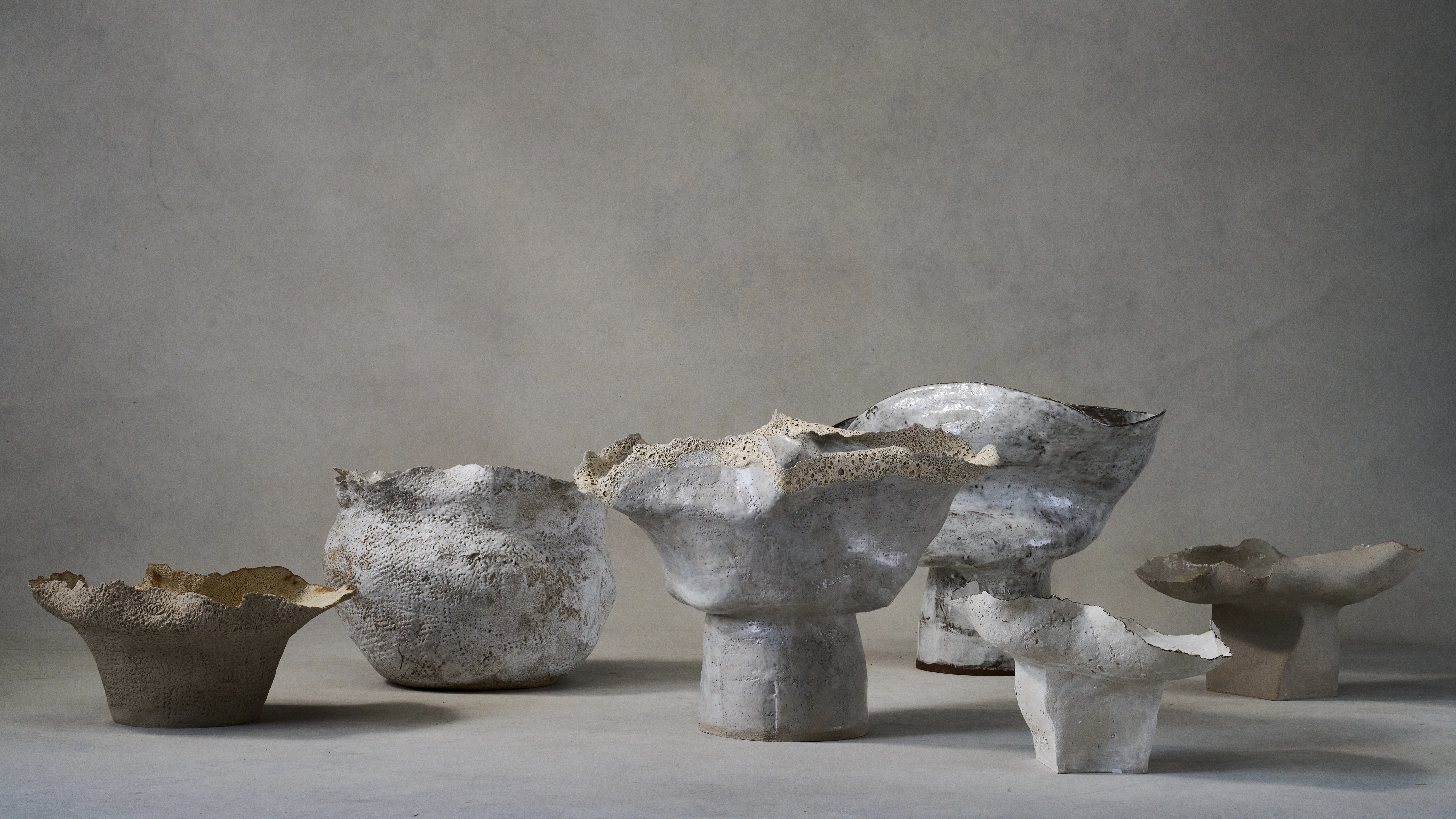 Ludmilla Balkis’ organic, earthy ceramics embody the Basque countryside
Ludmilla Balkis’ organic, earthy ceramics embody the Basque countrysideThe sculptor-ceramicist presents a series inspired by and created from found natural objects in a New York exhibition
-
 Designer Danny Kaplan’s Manhattan showroom is also his apartment: the live-work space reimagined
Designer Danny Kaplan’s Manhattan showroom is also his apartment: the live-work space reimaginedDanny Kaplan’s Manhattan apartment is an extension of his new showroom, itself laid out like a home; he invites us in, including a first look at his private quarters
-
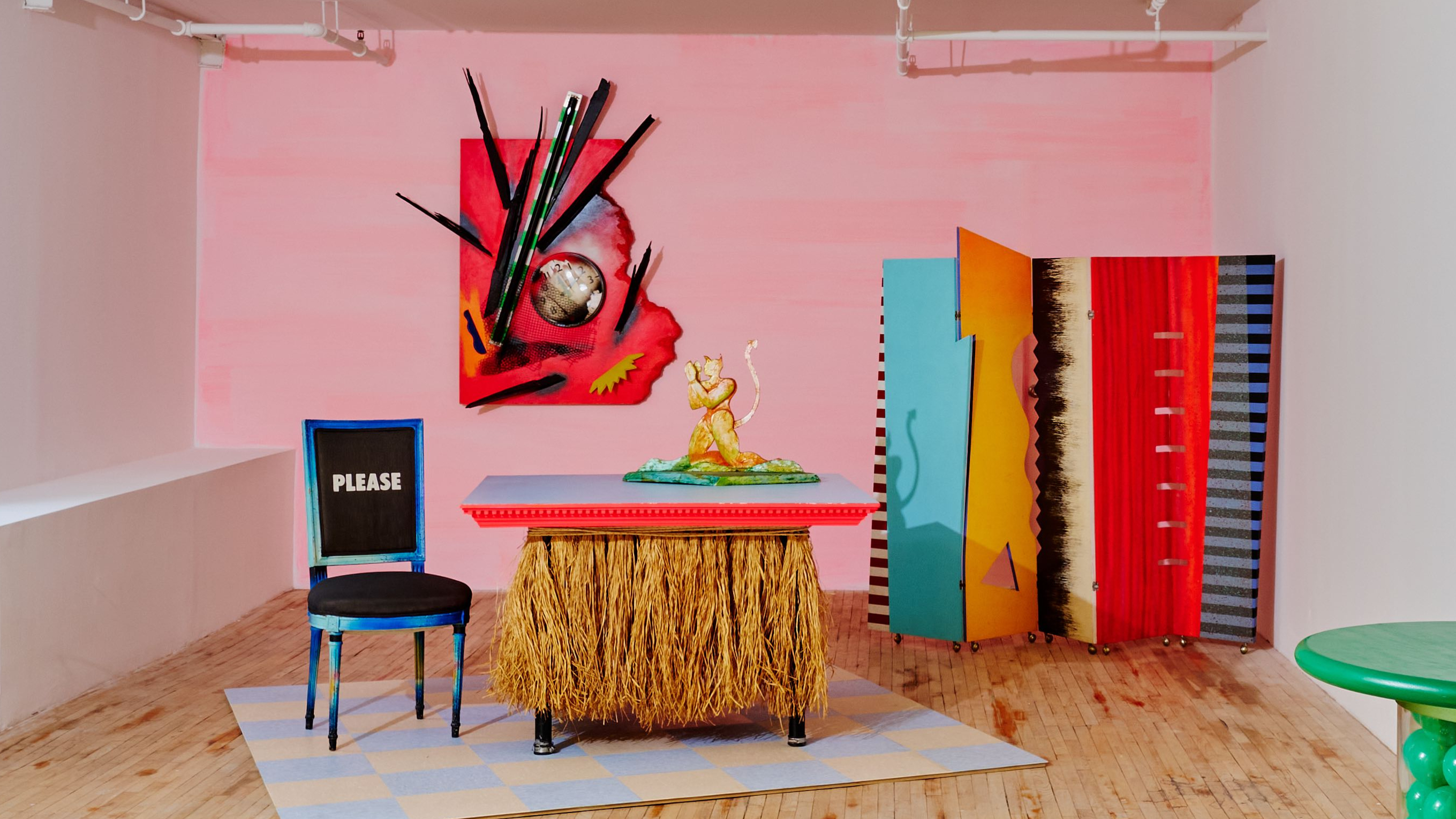 New Superhouse show captures the rebellious spirit of Dan Friedman’s Manhattan apartment
New Superhouse show captures the rebellious spirit of Dan Friedman’s Manhattan apartmentIn the late 1970s, graphic designer and artist Dan Friedman transformed his apartment into a Day-Glo laboratory of ideas. Now, a new exhibition at Superhouse in New York revisits his vibrant, rebellious world
-
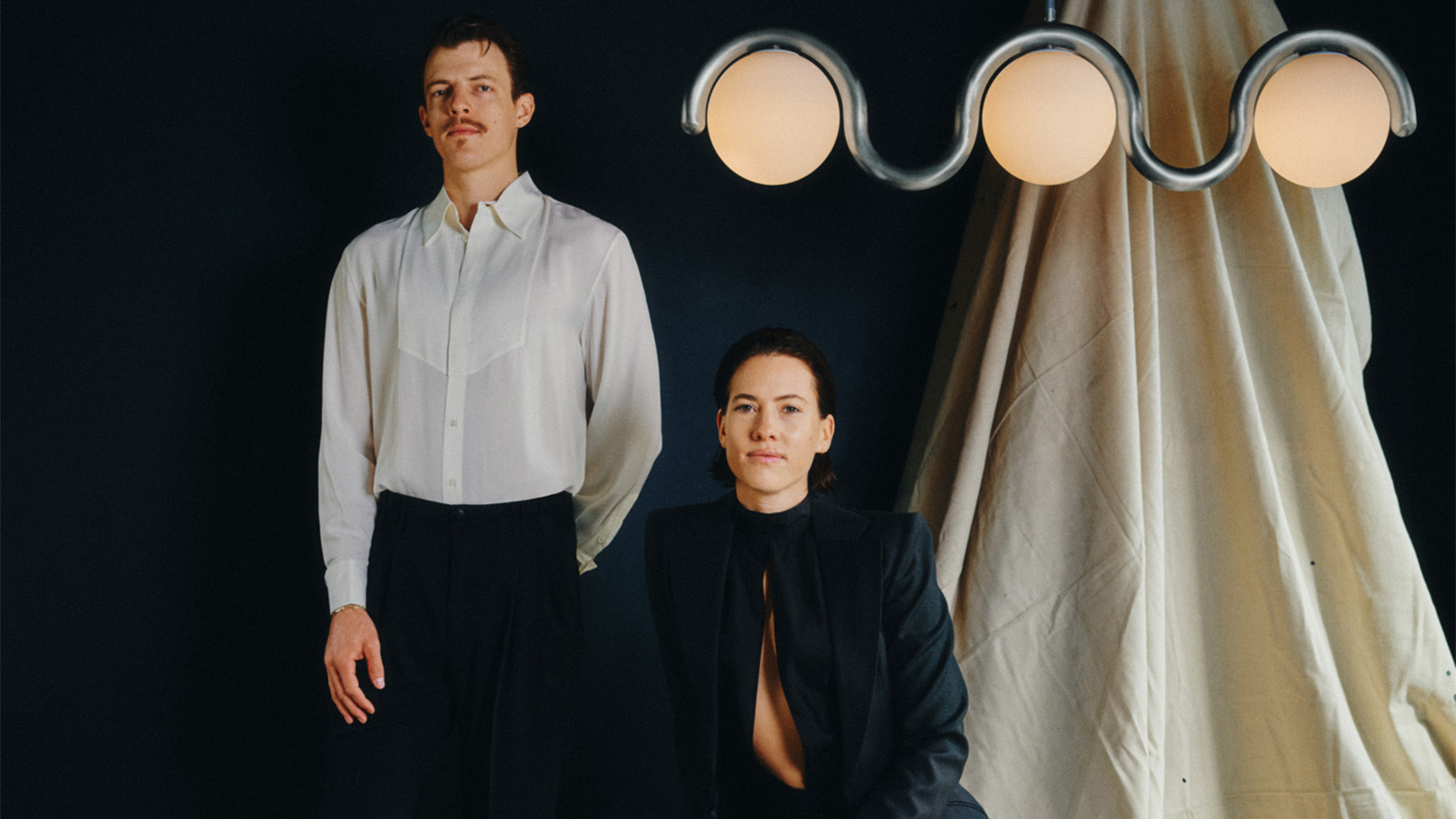 Design practice Astraeus Clarke is inspired by cinema to tell a story and evoke an emotion
Design practice Astraeus Clarke is inspired by cinema to tell a story and evoke an emotionIn a rapidly changing world, the route designers take to discover their calling is increasingly circuitous. Here we speak to Chelsie and Jacob Starley the creative duo behind Astraeus Clarke
-
 Hella Jongerius’ ‘Angry Animals’ take a humorous and poignant bite out of the climate crisis
Hella Jongerius’ ‘Angry Animals’ take a humorous and poignant bite out of the climate crisisAt Salon 94 Design in New York, Hella Jongerius presents animal ceramics, ‘Bead Tables’ and experimental ‘Textile Studies’ – three series that challenge traditional ideas about function, craft, and narrative
-
 One to Watch: designer Valerie Name infuses contemporary objects and spaces with historical detail
One to Watch: designer Valerie Name infuses contemporary objects and spaces with historical detailFrom vessels to furnishings and interiors, New York- and Athens-based designer Valerie Name finds new relevance for age-old craft techniques